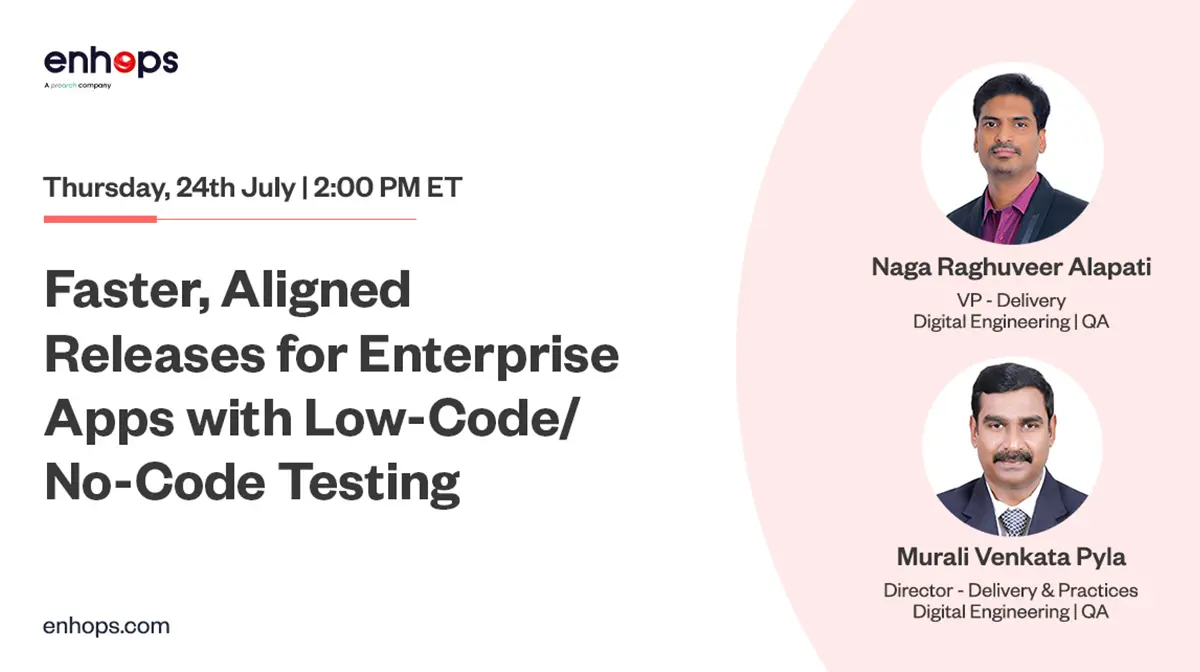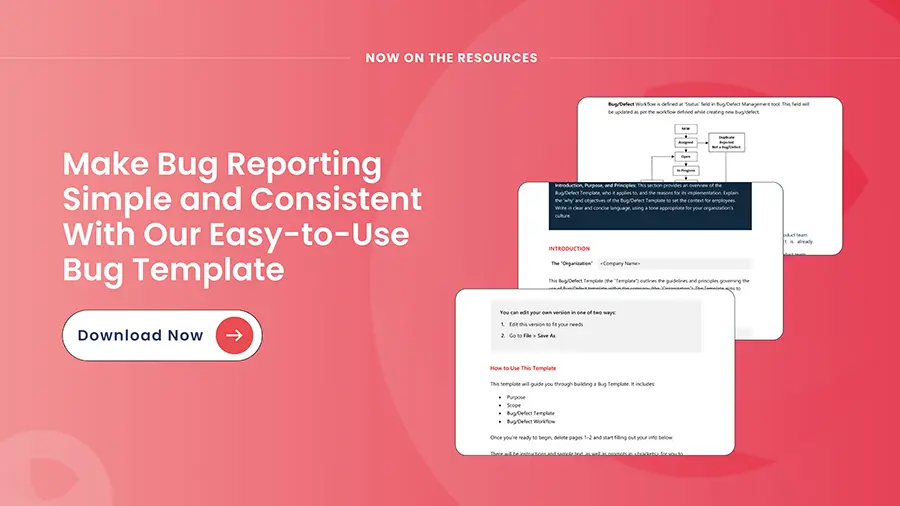In the race of digital acceleration, organizations cannot short-change quality. Given the success in test automation and hyper automation programs, they should be the primary areas of investments for organizations looking to achieve edge in the digital race. However, several studies suggest that large enterprise programs still showcase remarkably low levels of test automation in internal quality benchmarking data.
The benefits of leveraging quality assurance and quality engineering techniques are clear to technology heads but still the business case for leveraging test automation remains low. The adoption and the scaling of quality engineering initiatives and test automation remain low. Let’s examine some core organizational barriers that restrain to infuse test automation in large organizations and few ways to overcome them:
1. Lack of quality accountability in large transformations
In large scale transformation programs, needs of various team and departments are quite diverse. Mostly large organizations have multi-way IT models across various streams with different kinds of delivery and QA models being followed. With a multi-way IT approach, customer-facing app development teams move to DevOps and Test Automation practices while continuously adopting the new-age practices of software delivery.
As enterprises undertake sweeping modernization initiatives, quality assurance strategy often gets decentralized across disconnected projects. Front-end dev teams adopt new continuous testing tools and methods like shift-left. Core legacy migration sticks to old-school manual validation. AI/ML projects focus data quality validation. Mobile has its own user-centric testing needs.
This fragmentation creates disjointed automation maturity. Certain workstreams advance to DevOps-inspired practices like continuous integration, delivery and testing. Others lag behind without upgrades. True optimization around defect leakage, release cycles, technical debt is lost without an integrated view of end-to-end quality.
Appointing a centralized QA function with oversight across all applications fosters alignment. This Testing Center of Excellence (TCoEs) plays a key role in architecting an automation roadmap to advance quality capabilities uniformly. Setting standards around testing tools, traceability frameworks, metrics reporting and governance processes enables consistency.
At Enhops, we pride ourselves on providing best-in-class Quality Engineering services for leading enterprises worldwide. As part of our offerings, we have a signature capability around setting up Software Testing Centers of Excellence for clients.
Our TCoEs are outcome focused models that act as quality advisors to future-proof client’s testing practices by forming actionable playbooks around test automation frameworks, performance testing approaches, and AI-led testing strategies. Our TCoEs helps in institutionalizing knowledge transfers with structured learning programs based on client and delivery needs.
Beyond technical expertise, TCoEs provide domain expertise to formulate investment strategies by giving quick overview of ROI of test automation initiatives. Our TCoE also build conversations and communities around building working groups that incentivize testing leaders into cross-pollinated coaching roles benefiting the wider ecosystem. Overall, TCoEs amplify quality programs by combining tech transformation and culture transformation at the grassroot level.
2. Visibility barriers across testing function
Driving progressive and advanced initiatives like test automation depends on management buy-in and complete understanding about current manual testing activities and their success or failures. However, in a lot of organizations, the existing test activities and their effect on business priority areas are camouflaged by development activities. The QA teams must share critical metrics that helps management in understanding the health of development pipeline and manual test effectiveness.
Inability to quantify the true costs and effectiveness of mundane repetitive regression testing through manual bands, taking up over 70% of QA capacity as per research by leading analysts.
Showcasing proof points like defect escape rate, test coverage ratios, time to test new codes, and repeated number of bugs helps in outlining the weakest areas in pipeline health. Quality engineering teams create simplified dashboards to show test automation ROI and justify need for modern continuous testing and integration-based practices.
3. Collaboration between Dev, Test, and Ops is still limping
With technical leaders endorsing DevOps and trying to create harmonious communication between Development, Testing, and Operations team, the actual collaboration is still missing. This happens owing to various reasons such as development teams are unsure of what test scenarios to focus on to maximize defect detection, testing teams have limited visibility into application architecture, business priority areas, and customer experience metrics, and ops team with sparse understanding of development, test data, and application architecture that can enable automation reliability anytime, anywhere. How do you address these:
These are some of strategies that we have recommended and implemented while driving test automation excellence for our clients:
- “Shift Left Dialogs” – Internal periodic discussions for test automation leads and developers to update application and automation health, business priority areas wrt to application development, and upcoming automation focus areas.
- “How does it look for me” – This forum allows ops team to shadow development and testing team to understand challenges at both ends and improve downstream impact.
- Celebrating inter-team collaborations publicly as success stories via newsletters, town halls that reinforce clarity on quality ownership.
- Common reporting CADENCE and same nomenclature across development and testing teams to update about automation coverage wrt features released provides shared touchpoints.
These non-traditional collaboration forums and rituals enable seamless inter-team collaboration in large enterprises to foster empathy, shoot for clarity and more.
4. Resistance to evolve from manual testing methods
One of the toughest roadblock around implementing test automation practices are innate resistance to move away from legacy testing methods. These methods are into existence for years and even after DevOps gaining momentum are ingrained in large organizations.
Getting past reluctance in adopting automation will require leveraging automation in small pockets and scaling it across organization. There’s a common myth across teams and organizations that automated testing will replace manual counterparts, allaying such myths through guided knowledge and sharing workshops can help.
To evolve from manual methods to automation, time and efforts are needed in building low-stakes sandbox environments where QA teams can experiment with test automation frameworks. Test automation champions can create a basic plan to outline the test cases that can be automated for quick ROI, tools required and anticipated timelines and plan to integrate with current manual methods.
Technical leaders need to drive the cultural shift by constantly communicate the need of adopting automation and how testers can prepare themselves for this new shift.
Enabling Test Automation Success via Communication, Tools, and Examples
As software development teams and methods continue to advance, test automation has become an essential part of the overall process. However, adoption and success remain a challenge. To overcome this, technical leaders must start creating awareness around test automation, its benefits, cost and ROI, and timelines anticipated to make a smooth transition from manual to automated testing.
At Enhops, we work with our client stakeholders to create awareness around test automation, train their teams on automation tools and processes, and use them effectively. If you are one of those teams that have not yet embraced test automation, it’s time to act and start automating your testing process.
Interested in doing a podcast with us about quality initiatives in your organization, let’s talk at marketing@enhops.com



